Can mangrove plants tackle climate change? These West Palm Beach growers say they can
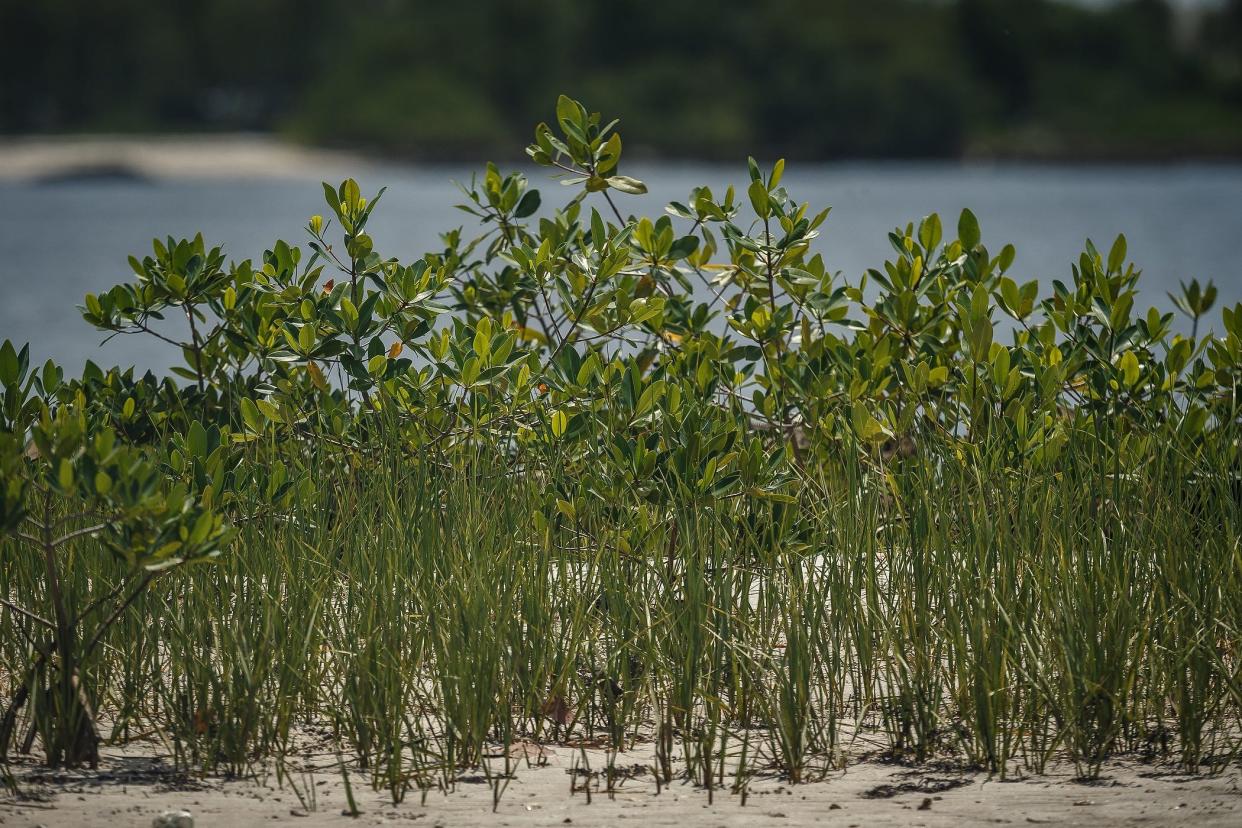
This article is part of a USA TODAY Network reporting project called "Perilous Course," a collaborative examination of how people up and down the East Coast are grappling with the climate crisis. Journalists from more than 35 newsrooms from New Hampshire to Florida are speaking with regular people about real-life impacts, digging into the science and investigating government response, or lack of it.
WEST PALM BEACH — Gone are the days of game, set, match on this backyard tennis court. The cracks in the sun-bleached hardcourt highlight its age. But there's a new game afoot.
In place of shoe scuffs and fuzzy yellow balls are rows of square garden beds, each holding as many as 100 potted mangroves of varying ages and species.
It’s here at this sprawling home off a busy road in suburban West Palm Beach where 25,000 of these environmental "Swiss Army knives" grow from seed to flourishing tree.
When the trees are strong enough to be replanted in nature or in the community, after two years of growth, they are ready to serve as the foundation for new habitats, suck and store carbon from the atmosphere, strengthen eroding shorelines and, overall, tackle the effects of climate change.
Gulf stream changes: One of the world's most famous fishermen talks climate change
Twins Kyle and Keith Rossin run the mangrove nursery in tandem with their seven-year-old outdoor apparel company called Mang Gear, which promises customers to plant one mangrove with every purchase of a unique mangrove camouflage shirt, sun-protective fishing gaiter, aquatic life sticker or another product.
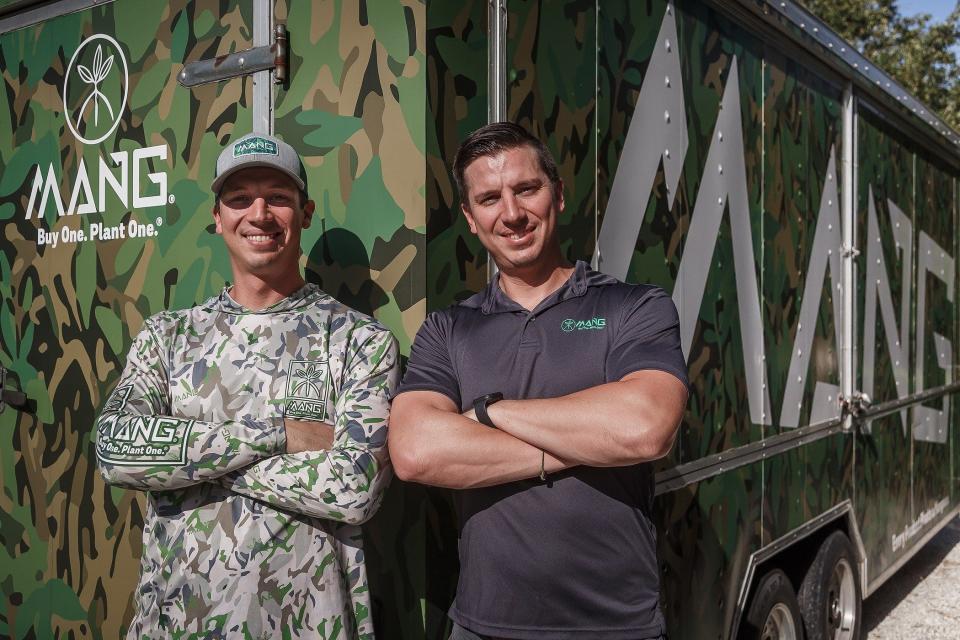
The red, white and black mangroves grown at their nursery have been planted at a private property on the nearby Earman River, Mang's first project, and along the shoreline at the Jupiter Inlet Lighthouse, built on a sand dune that is slowly crumbling apart into the water below. Mang also has roots in projects in the Bahamas and Madagascar.
In what will be their biggest project yet, Mang has so far donated more than 3,300 mangroves to a collection of islands in the Lake Worth Lagoon estuary.
Rebuilding the natural shoreline
Excavators and bulldozers crawled over the small island, distributing sand that had been borrowed from dredging projects in the area, a process called “beneficial re-use.” The shorebirds didn’t seem to mind the presence of these machines in the middle of Lake Worth Lagoon.
Just 30% of the shoreline in the lagoon, a 21-mile stretch of water between the mainland and the island of Palm Beach, is considered natural. As far as the eye can see, seawalls and riprap — more traditional, “grey infrastructure” erosion-control techniques — fortify the waterfront property lines of multimillion-dollar mansions, with manicured lawns, towering palm trees and boat docks.
It makes for a visually smooth shoreline but doesn’t do much for wildlife.
Palm Beach County and other partners are working on a series of projects to change this for the health of the entire ecosystem. Tarpon Cove is the latest, with five mangrove islands about an acre in size sprouting near the historic El Cid neighborhood in West Palm Beach.
As Palm Beach County was developed throughout the 20th century, crews scooped the bottom of the Lake Worth Lagoon for fill, leaving behind pockets of thick silt or clay sediment devoid of oxygen.
That material becomes a problem after it settles on the lagoon floor, then continuously gets suspended in the water because of waves, whether through tides, a passing boat or a storm. This in turn clouds the water and prevents light from reaching the bottom where seagrasses would grow. Seagrasses are essential to shelter fish and feed marine life like manatees. The dearth of seagrass in Florida has been such a problem that the state began a program to feed manatees lettuce earlier this year.
Bringing sand to this area will “cap” the muck and create a shallower habitat to promote grass growth. The thousands of Mang mangroves planted on the islands, with a few thousand more scheduled, also help stabilize sediment.
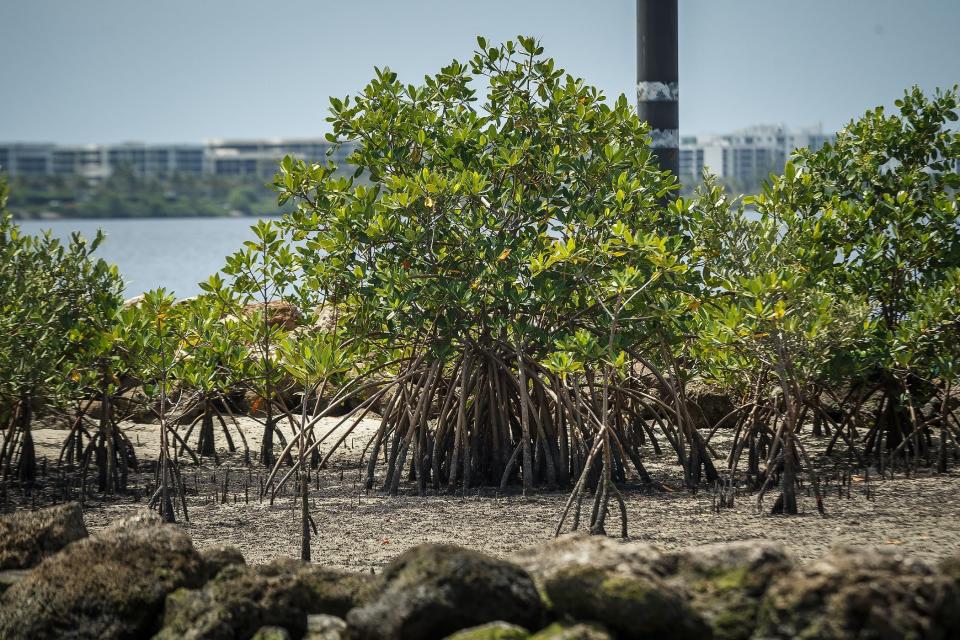
“While we’re building the future, we’re trying to restore a system that is degraded, trying to make the estuary a better estuary,” said Eric Anderson, senior environmental analyst with the county’s Environmental Resources Management department.
The mangroves and cordgrass planted on the completed islands stand nearly equal in height, about thigh-high. These islands won’t provide as much defense against storm effects like flooding or wave energy as tall, vast mangrove forests might, but will offer some protection to buffer waves that slap against the hard concrete seawalls.
On a recent day, the calm waters gently lapped the shoreline, some parts bare sand while others bordered by riprap. A black-crowned night heron stalked its prey as a flock of black skimmers flew over from a nearby island.
More: Surge in rip current deaths prompts calls for better beach protection
More: Hurricane Andrew unleashed fury 30 years ago. But since, storms have gotten much worse
The presence of black skimmers, a threatened species in Florida, is a testament to the work done in the Lake Worth Lagoon. Only two pairs of the small, tern-like birds were nested on one of the islands in 2020. Now, the skimmers — known for bills that are uniquely shaped to skim the water’s surface mid-flight for prey — have been counted in the dozens, along with least terns and American oystercatchers.
Birds that have been banded for scientific purposes have been spotted here from counties as far as 150 miles away. Not only do the islands provide habitat and food but also a safe haven from predators and humans.
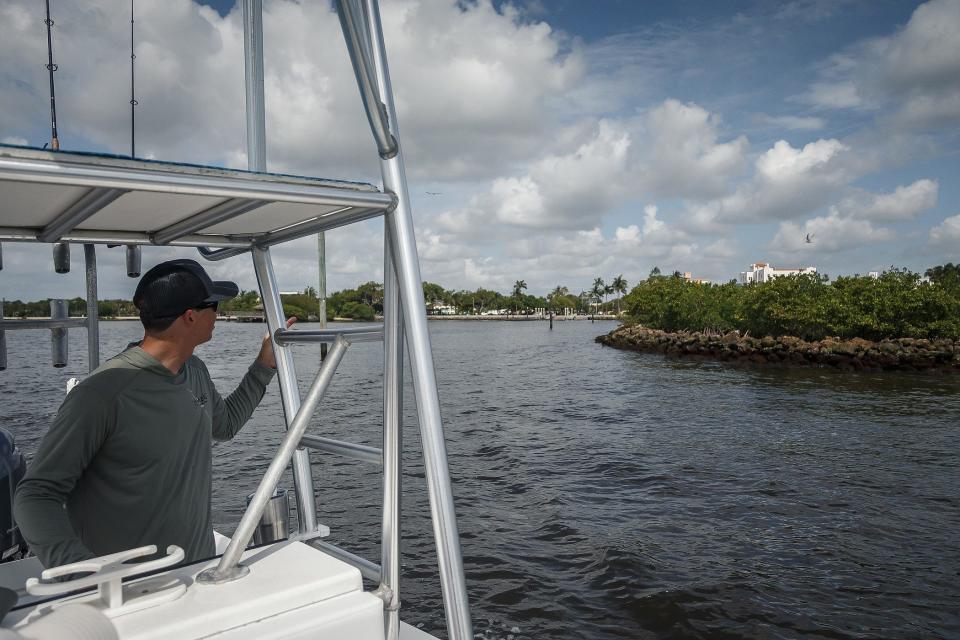
'Changing the world, one mangrove at a time'
The home that hosts the headquarters and nursery of Mang Gear was previously owned by the Rossin twins’ grandfather, former state Senate Minority Leader Tom Rossin. In 1972, The Palm Beach Post dubbed the home, “The House That Grew,” referring to the various additions made to it.
These days, one could call it “The House That Grew Mangroves.”
Mangroves of varying ages are here on and around the tennis court, growing about a foot a year.
The youngest, with a tuft of leaves on top of trunks like thick green pencils, grow from small plug trays on a gravel path just outside of the court’s fencing. The oldest trees, roughly six years old and stretching about 6 feet high, are on the verge of outgrowing their pots. These are kept on standby for special projects, like rebuilding a bird rookery in Sebastian on Florida’s Treasure Coast, a project that requires larger, stronger trees to withstand nesting and roosting.
To the untrained eye, these trees with almond-shaped leaves all appear to belong to the same species.
Most of the trees are red mangroves, which occur naturally closest to the shoreline. As they mature, they can be spotted by their long spindly roots that plunge into the water. Beneath the surface, the red mangrove’s roots create a tangled forest, keeping predators at bay by offering plenty of refuge for fish and crustaceans.
More: Because of growth and a fear of contaminants, West Palm considering a new way to get water
The Rossins also raise black and white mangroves. Black mangroves grow upland from red mangroves, featuring distinct spiky roots that stick up from the ground like stalagmites. White mangroves sit the farthest from shore with their cousin, the buttonwood.
Together, these mangroves provide habitat for birds as well as reduce harmful wave action that can erode shorelines.
To keep mangroves in constant supply, Mang hosts a seed, or propagule, collection drive every August. Volunteers from across the state scoop up mangrove seeds that are floating in the water, unattached to any sediment (this collection doesn’t occur in state parks, it’s important to note), to be sent to Mang.
Red mangrove seeds could be mistaken for green beans, while black and white seeds are smaller and round. More than a dozen seeds at a time sit in a black plastic pot to grow roots before they are planted.
Angling for a cause
Mangroves are the poster children for resilient green infrastructure. While they may be as strong as Superman in the fight against climate change, they do have their own kryptonite. Volunteers must be careful planting them, since breaking any roots will allow salt to seep into their system.
“If it’s improperly planted, you’ll see almost instantly the head will drop,” Keith said.
But a 70% survival rate is considered a success.
The Rossins’ work in mangrove restoration harkens back to their love for fishing, which they couldn't do if juvenile fish didn't have a safe habitat to grow and play a role in the overall ecosystem.
“People come down here (to Florida) to dive. People come down here to see the wildlife. People come down here because there’s clean water, right?” Keith Rossin said. “They don’t want to come down here if there’s dirty water. They don’t want to come down here if there’s no fish.”
Much of what he was learning while getting his environmental studies degree at Florida Gulf Coast University was about environmental decline, not enhancement, Kyle said.
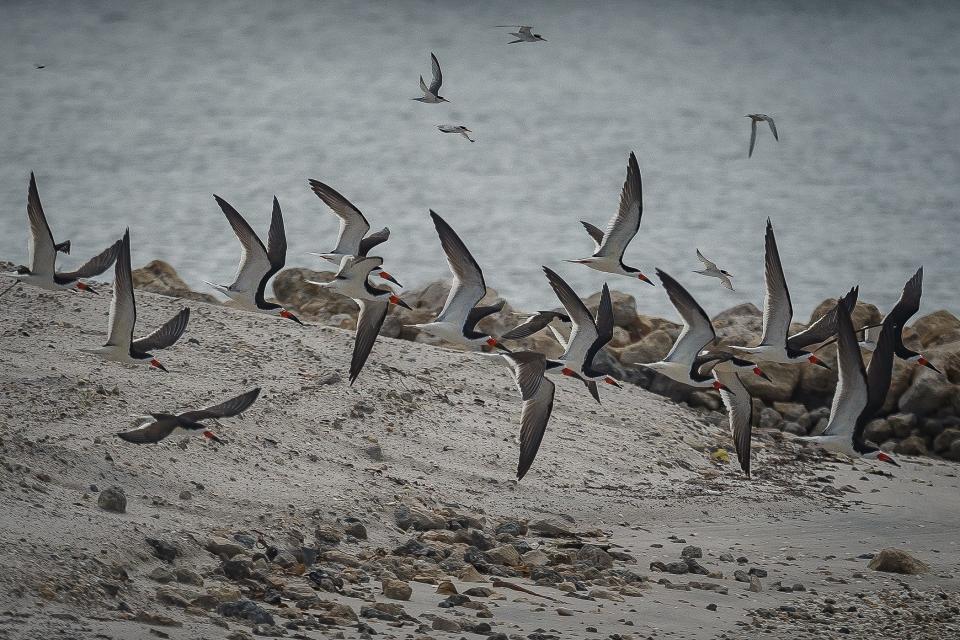
A mere hobby for some, a lifestyle for others, his passion for fishing led to the design of an innovative mangrove camouflage, and ultimately to a business that could educate the people about mangrove habitats and build a mission to "change the world, one mangrove at a time."
It's the old tennis court that serves as the launching point in one small fight for habitat preservation and against climate change. It's where mangroves perhaps have a better chance at life compared to in the wild, and from where they can be deployed to areas that will benefit the most.
Once on the frontlines, the mangroves get to work. Slowly, over time, but certainly, they're digging in to make a difference.
Hannah Morse covers consumer issues for The Palm Beach Post. Drop a line at hmorse@pbpost.com, call 561-820-4833 or follow her on Twitter @mannahhorse.
This article originally appeared on Palm Beach Post: Are mangroves the answer to climate change? West Palm growers say yes

